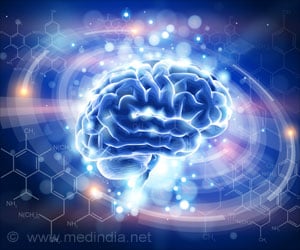Study suggests a strong link between Tau protein within neurons and the activity of particular DNA sequences called transposable elements, which might trigger neurodegeneration.

‘The fact that Tau aggregates can affect that architecture of the genome may be one possible mechanism by which transposable elements are activated in Alzheimer's disease.’





Although scientists have studied for years what happens when Tau forms aggregates inside neurons, it still is not clear why brain cells ultimately die. One thing that scientists have noticed is that neurons affected by Tau accumulation also appear to have genomic instability. "Genomic instability refers to an increased tendency to have alterations in the genetic material, DNA, such as mutations or other impairments. This means that the genome is not functioning correctly. Genomic instability is known to be a major driving force behind other diseases such as cancer," Shulman said. "Our study focused on a new possible causal connection between Tau accumulation within neurons and the resulting genomic instability in Alzheimer's disease."
Enter transposable elements
Previous studies of brain tissues from patients with other neurologic diseases and of animal models have suggested that the neurons not only present with genomic instability, but also with activation of transposable elements.
"Transposable elements are short pieces of DNA that do not seem to contribute to the production of proteins that make cells function. They behave in a way similar to viruses; they can make copies of themselves that are inserted within the genome and this can create mutations that lead to disease," Shulman said. "Although most transposable elements are dormant or dysfunctional, some may become active in human brains late in life or in disease. That's what led us to look specifically at Alzheimer's disease and the possible association between Tau accumulation and activated transposable elements."
Advertisement
"With this large amount of data, we looked to identify signatures of active transposable elements, but this was not easy," Shulman said. "We therefore reached out to Dr. Zhandong Liu, a co-author in this study, and together we developed a new software tool to detect signatures of active transposable elements from postmortem human brains. Then we conducted a statistical analysis in which we compared the amount of active transposable elements signatures with the amount of Tau accumulation, brain by brain." Liu also is assistant professor of pediatrics - neurology at Baylor and a member of the Dan L Duncan Comprehensive Cancer Center.
Advertisement
Other research has shown that Tau may disrupt the tightly packed architecture of the genome. It is believed that tightly packed DNA limits gene activation, while opening up the DNA may promote it. Keeping the DNA tightly packed may be an important mechanism to suppress the activity of transposable elements that lead to disease.
"The fact that Tau aggregates can affect that architecture of the genome may be one possible mechanism by which transposable elements are activated in Alzheimer's disease," Shulman said. "However, our studies in human brains only establish an association between Tau accumulation and activation of transposable elements. To determine whether Tau accumulation could in fact cause transposable element activation, we conducted studies with a fruit fly model of Alzheimer's disease."
In this fruit fly model of the disease, the researchers found that triggering Tau changes similar to those observed in human brains resulted in the activation of fruit fly transposable elements, strongly suggesting that Tau aggregates that disrupt the architecture of the genome can potentially mediate the activation of transposable elements and ultimately cause neurodegeneration.
"We think our experiments reveal new and potentially important insights relevant for understanding Alzheimer's disease mechanisms," Shulman said. "There is still a lot of work to be done, but by presenting our results we hope we can stimulate others in the research community to help work on this problem."
Source-Eurekalert












